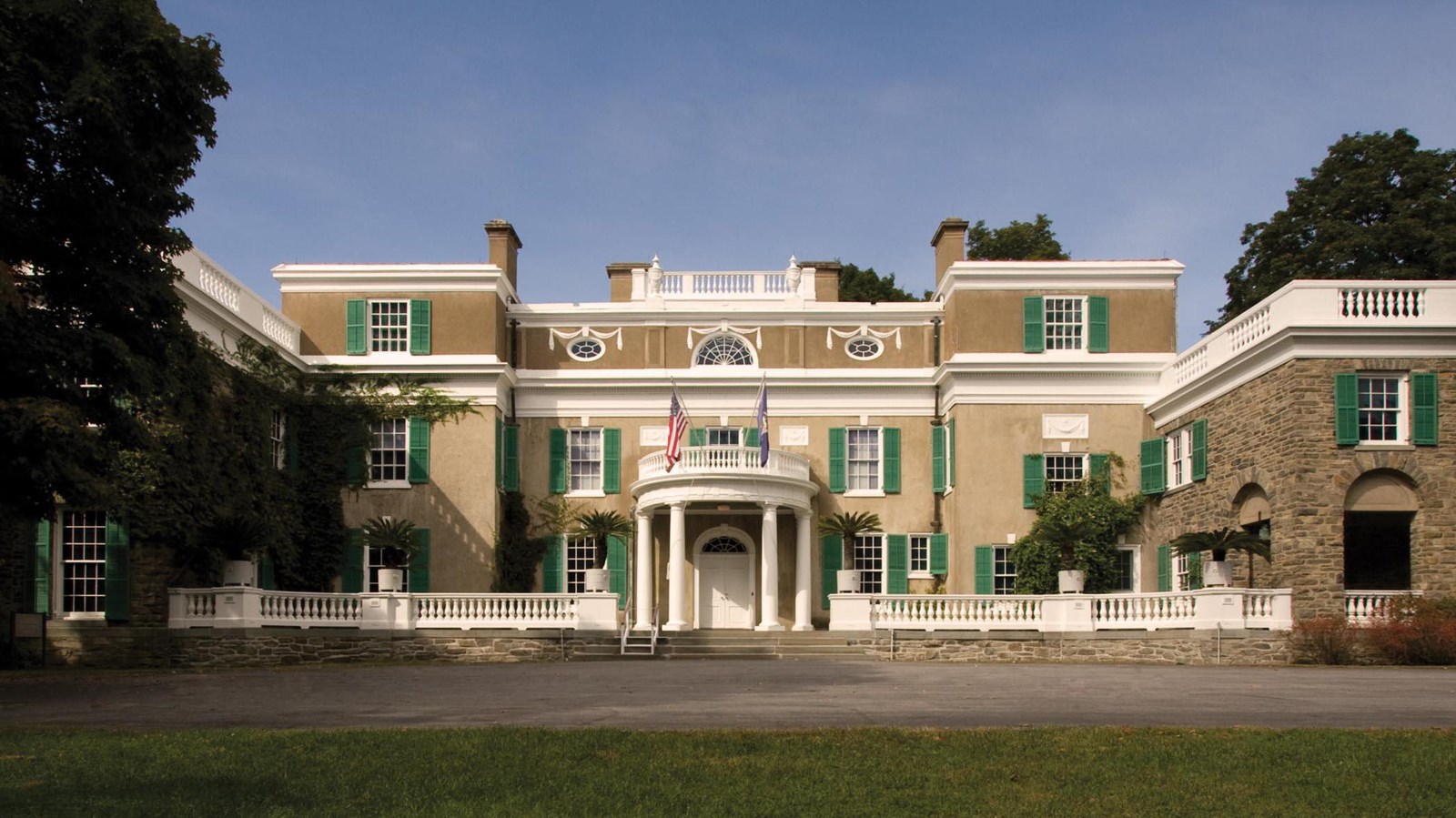Last updated: March 15, 2024
Place
Springwood

NPS Photo
Home to the 32nd and longest-serving president of the United States, Springwood reflects much of Franklin D. Roosevelt's personality and values. FDR returned to Springwood often, drawing on his roots here to renew his spirit during times of personal and political crisis. These walls bear witness to lively and somber discussions that profoundly shaped our nation and the world.
Springwood was home to one of our nation's most famous disabled persons. The house and its furnishings tell the story how FDR modified his environment to mitigate the effects of a world that was not designed for people with disabilities. The ramps, handrails, elevator, custom wheelchairs, crutches, and other artifacts of the president's disability are preserved in place at Springwood.
The original house was built about 1793 and later renovated into an Italianate style villa about 1850. The Roosevelts undertook a substantial enlargement and redesign of the Springwood house, transforming it from an Italianate villa into a Colonial Revival–style mansion designed by Hoppin & Koen of New York City. The enlargement, completed in 1916, accommodated Franklin and Eleanor's growing family while creating a more formal and stylish residence that reflected FDR's political aspirations. The new design was evocative of neoclassical mansions in the Hudson Valley during the formative years of the United States of America.
The 1915 alterations resulted in extensive changes to the house interior including the raising of the central roof to create a full third floor, expansion of the entrance hall, addition of the living room and a large suite of bedrooms above, and enlargement of the service areas. The stone and stucco house has a roughly U-shaped plan of two and three stories, and today reflects a Colonial Revival style appearance.
The interior of the house, which is furnished according to its appearance c. 1941, consists of a mixture of styles reflecting the additive nature of the 1915 alteration and expansion. In general, rooms that predate 1915 retain their earlier architectural details, except the entrance hall. This room features neoclassical arched openings, wainscot, and plaster paneling dating from 1915 and an 1892 staircase with turned balusters and carved newel posts in the Romanesque Revival style. The dark-stained grained woodwork installed in 1915 matches the visual appearance of the earlier finish on the staircase. A drawing room and dining room that predate 1915 are located off the hall, and the Smoking Room in the octagon wing dates to 1887. North of the entrance hall, the 1915 north wing and earlier service wing contain a series of service rooms, including the kitchen and servant's hall. FDR's study, which opens onto the loggia, and a rope-pulled lift he used after he contracted polio are also in the 1915 north wing. A gallery framed by French doors extends south of the entrance hall, with a small room known as the Snuggery to the east, formerly the south parlor in the c.1850 tower. The gallery opens to the living room in the south wing added in 1915. This room, the largest in the house, is ornately detailed with two fireplaces surrounded by shield and rose appliques, a canvas ceiling with decorative molding, raised wood paneling finished in a dark color matching the entrance hall, and French doors that open onto the south porch. The walls are lined with built-in bookcases.
The upper floors of the Home are generally simply detailed with painted woodwork and papered walls. Bedrooms for Sara, Franklin and Eleanor occupy the second floor of the south wing. Five bedrooms are in the main block of the house. These include the original master bedroom for the house, where FDR was born. The second floor of the north wing contains eight servants' rooms. On the landing of the stairs to the third floor are two rooms for visiting servants. The third floor of the house contains three bedrooms, a play room, and a nursery.
Host to the president and his family, friends, cabinet members, secretaries, ambassadors, foreign government officials, and royalty for extended stays away from the White House, Springwood is full of history. It bears the unmistakable imprint of FDR's personality. It is the house where he was born, endured his early battle with polio, crafted his vision for a modern world governed by an alliance of peaceful nations, and where he returned frequently during times of national and international crises to partake of its restorative nature. It was his wish to leave the house intact to the American people. Soon after his death, the family transferred ownership to the National Park Service. The Home of Franklin D. Roosevelt National Historic Site opened to the public in 1946 and has remained in continuous operation as a museum since.
